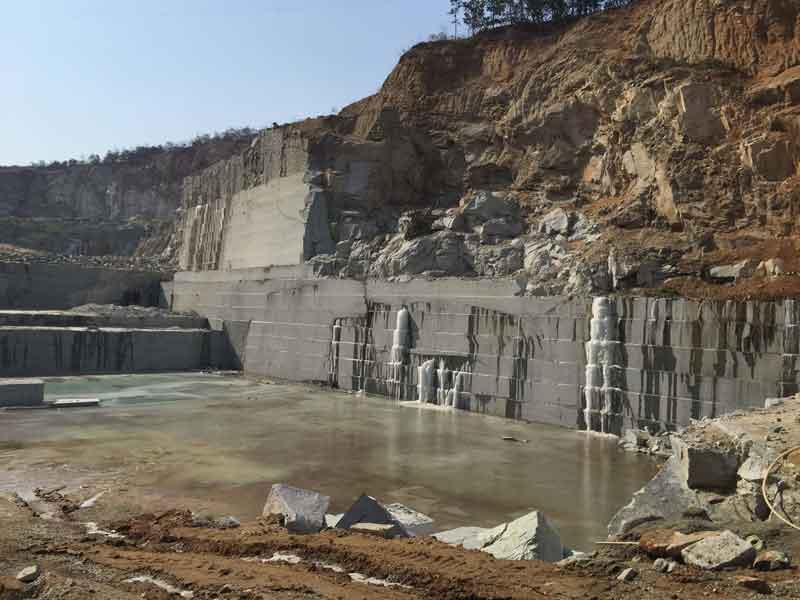Unveiling the Mysteries of Granite Quarrying: Where Stamina and Sophistication Meet
The globe of granite quarrying is a realm where the raw toughness of nature converges with human artistry to produce frameworks that stand the test of time with an air of beauty. From the midsts of quarries to the thorough polishing in workshops, the process of transforming granite right into building marvels is a complex dance of custom and technology. As we peer into the depths of this ancient craft, we begin to discover the concealed intricacies that shape the extremely significance of our constructed setting.
The Origins of Granite Quarrying
In the annals of architectural history, the origins of granite quarrying are shrouded in a tapestry of ancient workmanship and geological wonders. Dating back to ancient Egypt and Mesopotamia, the extraction of granite from quarries marked the beginning of a journey that would ultimately cause the development of several of the globe's most famous frameworks.
Granite quarrying's origins can be mapped to the experienced artisans who recognized the stone's sturdiness and aesthetic appeal. Through a combination of primitive devices and large resolution, these early quarry workers unearthed granite blocks that would come to be the foundation of human beings.
As human beings progressed, so did the methods of quarrying granite. The Romans, renowned for their engineering prowess, developed innovative approaches for removing granite to build monuments, temples, and roadways that stood the examination of time.
The tradition of these ancient quarrying techniques remains to shape modern architecture, with granite continuing to be a sign of stamina and beauty in building projects around the world. (granite quarries in south africa)
Tools of the Quarrying Trade
The advancement of granite quarrying strategies from ancient civilizations to modern-day times highlights the important function played by the tools of the quarrying sell shaping the industry's techniques. In ancient times, quarrying tools were primary, commonly being composed of chisels, hammers, and wedges made from products like bronze or iron. These devices needed considerable workforce and time to essence granite blocks from quarries.

Additionally, the intro of pneumatically-driven tools and high-powered machinery has considerably reduced the physical labor called for in quarrying operations, improving worker security and performance. As the quarrying sector remains to introduce, the devices of the trade remain at the leading edge of driving development and shaping the future of granite extraction.
Drawing Out Blocks of Granite
Using accuracy equipment and progressed methods, the extraction of granite blocks from quarries has become a sophisticated procedure in the modern-day quarrying market. The preliminary step entails determining the place and size of the granite deposit to establish one of the most effective extraction approach. As soon as an appropriate site is picked, the removal process starts with the boring of holes for the positioning of dynamites. Controlled blowing up methods are then used to disintegrate the granite into convenient sections.

Polishing and Ending Up Methods
To attain a perfect surface area on granite blocks, proficient artisans employ a collection of meticulous sprucing up and completing techniques. After the initial removal and shaping processes, the granite obstructs undertake an extensive polishing phase to enhance their all-natural beauty and resilience. One usual method used in brightening granite is diamond abrasion, where industrial diamonds are made use of to grind and brighten the stone to a smooth finish. This procedure not only produces a shiny surface yet likewise ensures harmony in shade and structure throughout the granite block.
In enhancement to polishing, completing strategies are applied to additional improve the granite's look. These techniques may consist of flaming, sharpening, or brushing, each offering distinct structures and coatings to suit different aesthetic preferences. Flaming, for example, entails exposing the granite surface to high temperature levels to develop a harsh, textured finish, suitable for outside applications where slip-resistance is crucial. Honing, on the other hand, offers a matte surface that is smooth to the touch, best for indoor countertops and flooring. By thoroughly choosing and applying these polishing and completing methods, artisans can transform raw granite blocks into splendid items that showcase both stamina and sophistication.

Environmental Effect and Sustainability
With the growing focus on environmental awareness in the industry, granite quarrying techniques are progressively scrutinized for their effect on natural deposits and lasting sustainability. Quarrying for granite can have substantial environmental ramifications. The removal process usually involves making use of heavy machinery, nitroglycerins, and large amounts of water, causing habitat destruction, dirt erosion, and water pollution. Additionally, the transport of granite from quarries to processing facilities produces carbon exhausts, even more adding to environmental destruction. granite quarries in south africa.
To reduce these effects and ensure sustainability in granite quarrying, sector stakeholders are adopting various steps. Carrying out innovative modern technologies to reduce energy consumption and water use, reclaiming quarried land for ecological restoration, and promoting responsible sourcing techniques are some approaches being used. Qualifications such as the Woodland Stewardship Council (FSC) and the Leadership continue reading this in Energy and Environmental Design (LEED) aid customers recognize ecologically friendly granite products.
Conclusion
In verdict, granite quarrying is a process that requires specialized devices and methods to remove blocks of granite and brighten them to a high level of coating. While the environmental influence of useful link quarrying can be considerable, initiatives are being made to enhance sustainability practices in the sector. Generally, granite quarrying is a delicate equilibrium in between taking advantage of the strength and style of this natural rock while reducing its influence on the atmosphere.
Comments on “A Trip With Granite Quarries in South Africa: Unveiling Nature's Creativity”